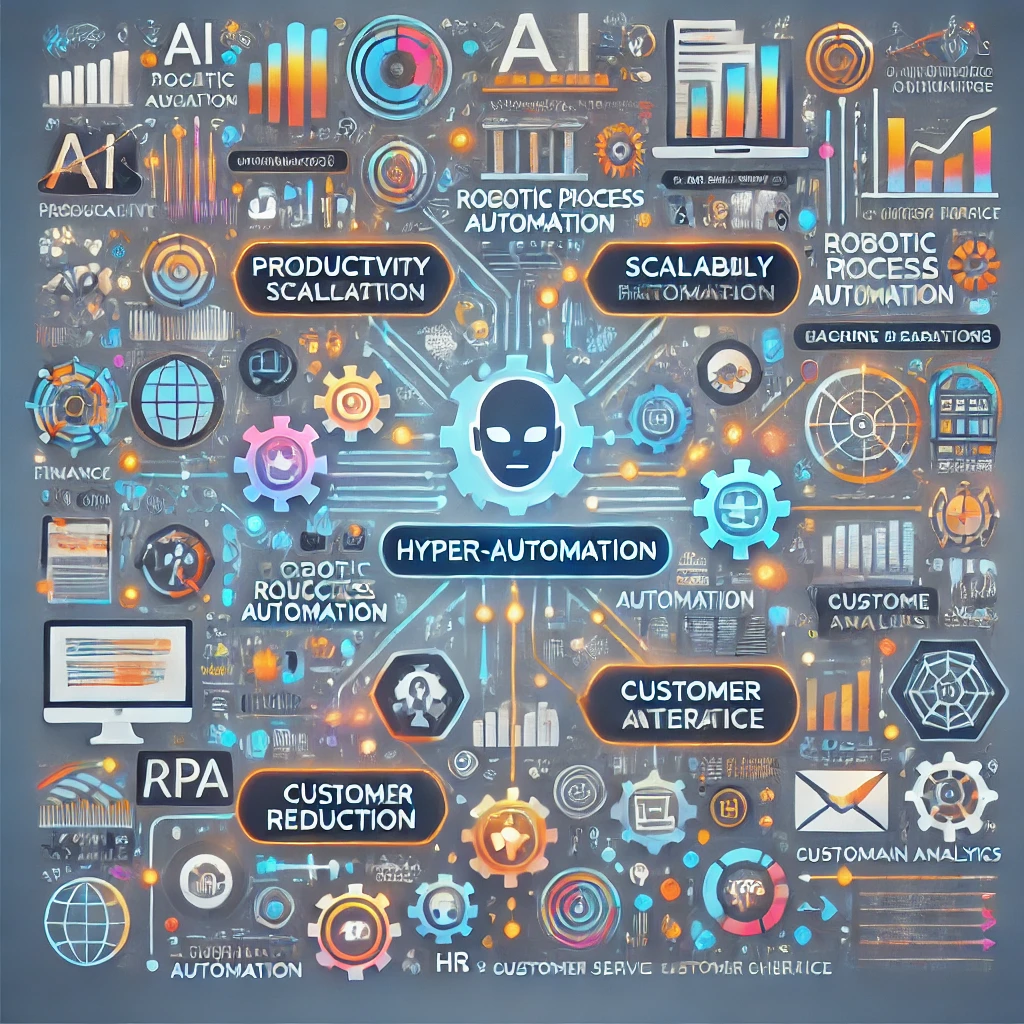How Hyper-Automation is Transforming Business Operations in 2024

In 2024, hyper-automation is revolutionizing the way businesses operate. It goes beyond traditional automation by integrating advanced technologies like artificial intelligence (AI), machine learning (ML), robotic process automation (RPA), and big data analytics to streamline processes, reduce human intervention, and enhance operational efficiency. This comprehensive approach enables businesses to automate end-to-end workflows, reduce errors, and unlock new levels of productivity.
What is Hyper-Automation?
Hyper-automation refers to the use of multiple automation technologies to scale operations and make them more agile. It involves identifying, vetting, and automating as many processes as possible through a combination of tools, such as AI, RPA, and ML. While traditional automation focuses on repetitive, rule-based tasks, hyper-automation leverages smart technologies to address more complex tasks and decision-making processes.
Key Benefits of Hyper-Automation
- Enhanced Productivity: By automating complex workflows, hyper-automation allows employees to focus on high-value tasks such as innovation and customer service, increasing overall productivity.
- Cost Reduction: Automating processes reduces human errors and the need for manual labor, resulting in significant cost savings for businesses.
- Faster Decision Making: With AI and big data analytics integrated into automated systems, businesses can access real-time insights, enabling faster and more informed decision-making.
- Scalability: Hyper-automation allows businesses to scale their operations without requiring proportional increases in workforce or resources, making growth more manageable and efficient.
- Improved Customer Experience: Automated processes ensure faster response times, personalized services, and seamless transactions, leading to better customer satisfaction and retention.
Examples of Hyper-Automation in Action
- Finance and Accounting: In 2024, hyper-automation is revolutionizing the finance sector by automating invoicing, accounts payable and receivable, auditing, and reporting. AI algorithms ensure accuracy in financial data and compliance, saving time and reducing errors.
- Human Resources: From recruiting and onboarding to payroll and performance management, HR departments are using hyper-automation to simplify processes. AI-powered tools now screen resumes, schedule interviews, and provide personalized career development plans for employees.
- Supply Chain Management: Hyper-automation in supply chains ensures that businesses can predict demand more accurately, optimize inventory, and automate logistics. These technologies help businesses reduce costs and meet customer expectations with greater precision.
- Customer Service: Automated chatbots, AI-powered customer support, and self-service platforms allow companies to offer 24/7 customer service, improving response times and reducing the need for human intervention in routine inquiries.
The Future of Hyper-Automation
As technology continues to advance, hyper-automation will become even more integral to business operations. In the coming years, more industries will adopt these technologies to stay competitive, and the ability to automate complex decision-making processes will redefine how businesses function.






Responses